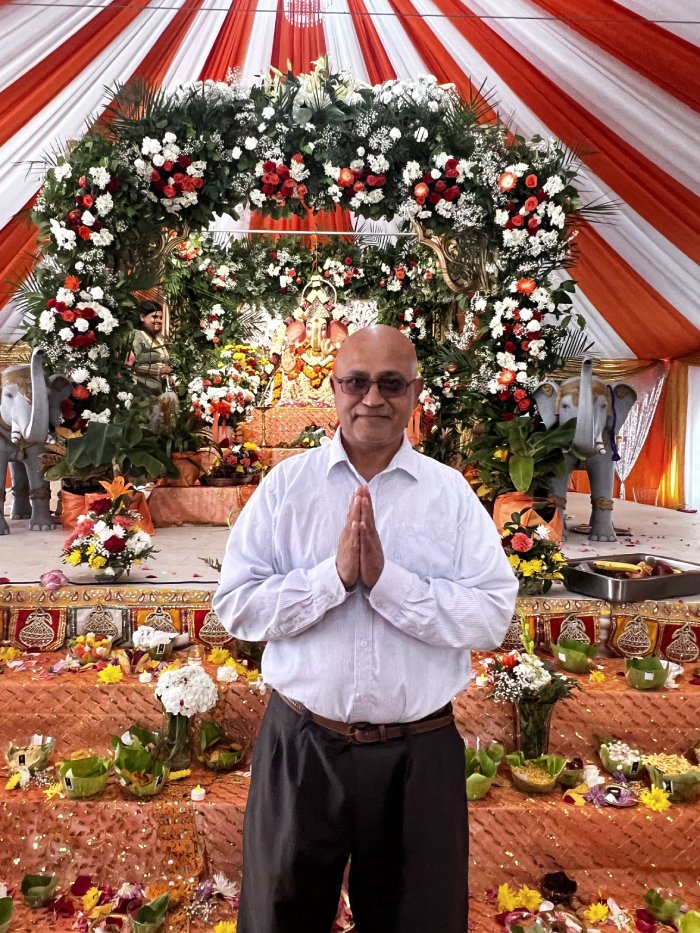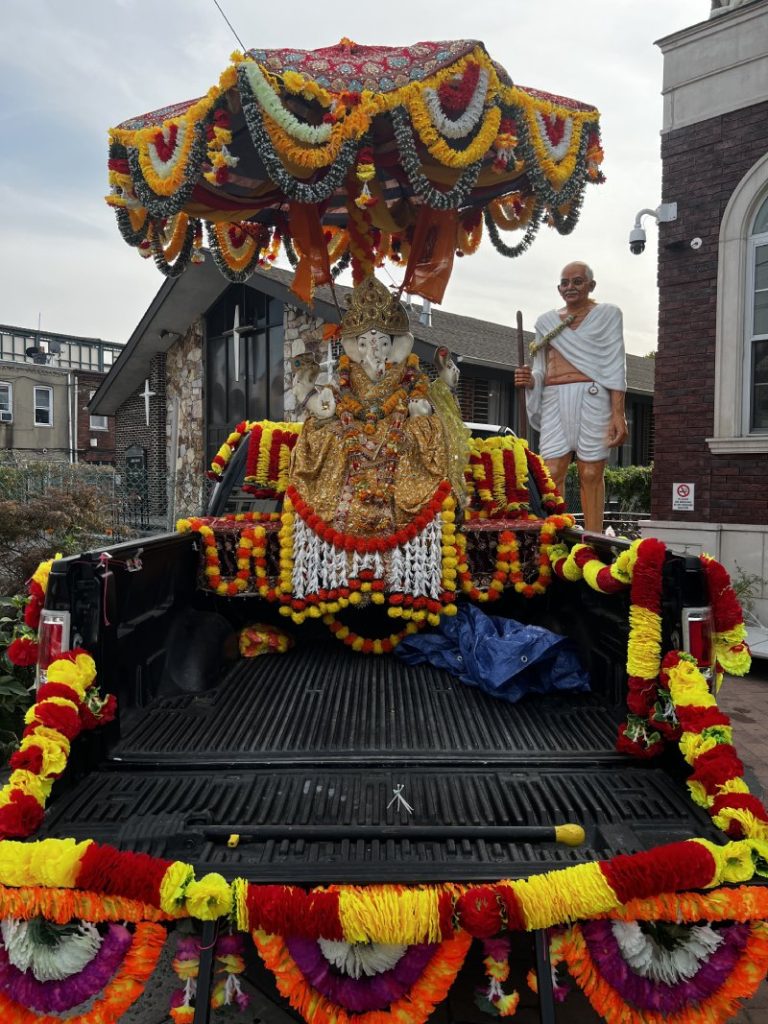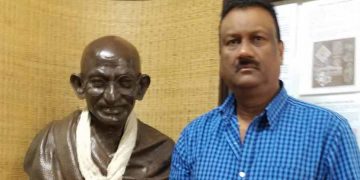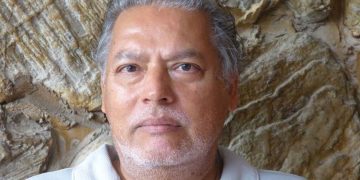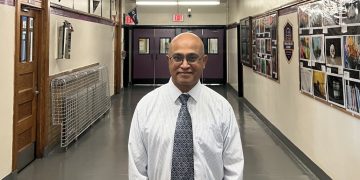Hundreds of Guyanese, Trinidadians, and other Indo-Caribbean Hindus took part in Lord Ganesh Mahotsav or Utsav processions on Sunday and Monday afternoon on Liberty Avenue in Queens to celebrate appearance of the deity and to mark the end of the festival that is also known as Ganesh Chaturthi. The festival was introduced in the greater Richmond Hill area by Guyanese and other Caribbean Hindus. They take pride in celebrating their identity and ancestral traditions.
Ganesha is a God worshipped by Hindus at every prayer (Jhandi) and the first to be invoked; in Hinduism, there is only one God or Goddess and is worshipped under different names. Ganesha is first to be mentioned in a puja because he has the power to clear obstacles and bring fortune and peace. The Ganesh festival and events held under its auspices brought people together from all walks of life in a fervent display of joy in the procession and praying at the temples.
Hindu pilgrims came from various parts of the city to join one of two processions on Monday late afternoon – one organized by Tulsi Mandir of 111 Street and the other by Grace of Divine. Grace of Divine also held a procession with a murthi of the deity on the first night of the festival and also again on Sunday afternoon. Grace of Divine also held a nightly discourse on Ganesha reading from the Hindu scriptures from Thursday September 5 thru Monday September 16 at the Cheddi Jagan empty ground on Pandit Ramlall Street, 133rd Street, off Liberty Avenue in Richmond Hill. Tulsi Mandir also held nightly discourse during the same period at its headquarter on Tulsi Mandir Street, or 111 Street, off Liberty Ave.
On Sunday, Grace of Divine followers marched from 121 Street to 133 Street. On Monday the procession started at 133rd Street and concluded on Cross Bay Blvd in Howard Beach over the bridge on Rockaway Beach, a few miles away. The Tulsi Mandir procession started at 111 Street from the mandir and ended up on Rockaway Beach where puja (rituals) was performed. Hundreds joined the processions leading to traffic jams. This is the 11th annual procession for Tulsi and the third of Grace of Divine.
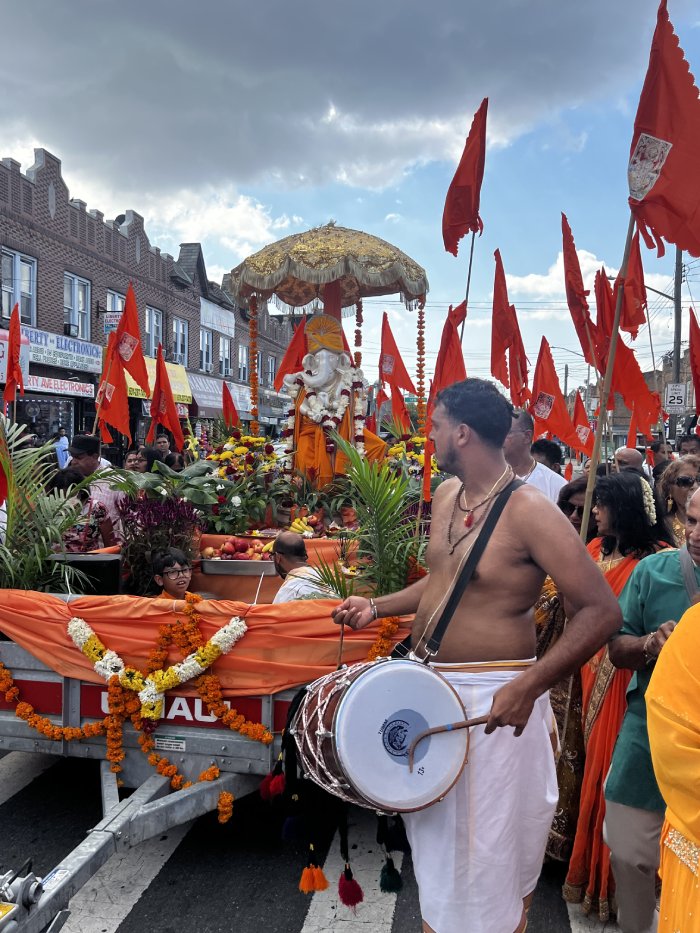
The processions included Hindu bhajans or songs with a Ganesh murthi atop an open trailer and a van called a yatra (people following the moving Ganesh murthi). Songs accompanied by music blared out and followers also sang along in a chorus or kirtan. Celebrants clapped, danced, and chanted mantras as the Ganesh yatra made its way on Liberty Ave and on Rockaway Beach where the clay murthi was immersed in the water for dissolution, a rite called Visarjna. The immersion of the murthi in the water was explained by a community leader from another temple. “When the clay dissolves in the water, the energy of Ganesha is spread all over, floating across the oceans to bless the entire universe.”
The festival was held over eleven days concluding on Monday. Ganesh Chaturthi festival was brought to America and other parts of the Indian Hindu diaspora by Indo-Caribbean (Guyanese and other) Hindus. The festival is observed on a grand scale with tassa, prayers, chanting, and rituals.

The festival was observed by Indo-Caribbean mandirs all over the USA and in Canada although only a few in Queens held nightly discourses. It coincides with the end of summer and concludes on the eve of the Pitri Paksh (starting Wednesday), a two weeks period of praying for the souls of the departed and paying tribute for their contributions to society. After Pitri Paksh, a period of remembrance of the departed, comes Navratri followed by Ram Leela and Dussehra and Diwali.
Ganesha Chaturthi celebrates the appearance of Lord Ganesh and is one of the most colorful festivals of Hindus. Not very popular in Guyana, it has become very popular in New York and Florida among Guyanese and other Hindus.
The locations for the two nightly programs were jam packed with worshippers. Dinner was served nightly as well as on Sunday lunch and hot and cold drinks.
The highpoint of the festival was the street procession. The procession began with offerings inside the temples praying for good tidings in the coming year and invocations and chanting of mantras at the start of the procession. Ganesh murthi was taken on a chariot and paraded on the avenue with loud music. At the conclusion of the procession some three miles away, there were further invocations before removal of the temple on the chariot and aground puja on the beach before immersion of the murthi in the water.
Along the parade route on Liberty Avenue, volunteers handed out sweets (ladoo) to onlookers and passersby. Roads were closed off facilitated by NY regular police and Auxiliary officers, several being Indian Guyanese from the greater Richmond Hill community. Many people stopped what they were doing and took on the procession attracted by the music and dancing, curiously querying what it was about. It is a religious fair open to all regardless of background. The organizers of the processions invited onlookers to join, and they welcomed people.
There was much jubilation with people dancing in the street, some bare feet. By partaking in the festivities, they celebrated their Hindu faith in America brought from the Caribbean and India, and they came together as a community far from the homeland of Guyana or from other parts of the Caribbean.
